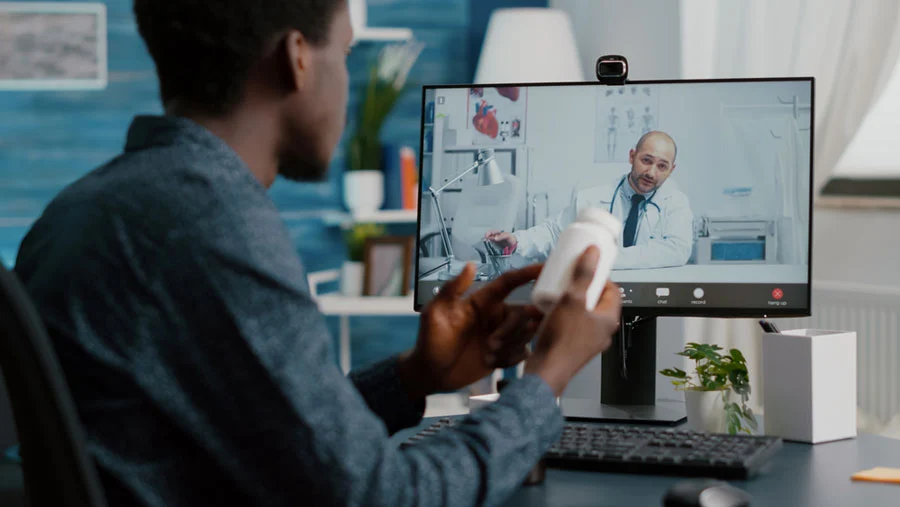The Evolving Patterns and Practices in Behavioral Healthcare
Just like any other modern industry, certain techniques and strategies come in waves. In certain sectors, history has a habit of repeating itself in various cycles, peaks, and valleys.
However, in the case of trends in addiction treatment, the strategies that treatment centers use tend to be more progressive – and rarely circle back to methods of old. There are a few exceptions to this rule, as best demonstrated by 12-Step meetings, which tend to gain and lose traction every few years, but always remain a staple to some degree.
It seems the major trends that take place in the substance abuse industry tend to rest with more evidence-based methods of therapy, although holistic treatment has been consistently making headway in many addiction treatment centers.
It’s important to keep in mind that trends in the substance abuse treatment industry don’t fall exclusively under therapeutic options themselves. There are plenty of other elements involved with addiction treatment that undergo periodic changes that help reshape the face of this $45B industry.
If you’re in the substance abuse industry, we’ve got the biggest trends in addiction treatment for 2024. These addiction treatment trends are in no specific order, and by no means are any of them “brand new,” but rather methods that have been in use and are getting attention or picking up steam.
The Latest Trends In Addiction Treatment
The following are some of the most encouraging addiction treatment trends for 2024 – within the industry and otherwise.
Public Awareness and Reception Towards Substance Use Disorders

At last, in 2024, it seems that the majority of the public is finally starting to come to terms with the fact that addiction treatment is available for the purpose of helping good people, rather than a get-out-of-jail-free card for “drug addicts.”
In the past, substance abuse treatment was always viewed in a negative light, if for no other reason than the demographic of people it catered to. However, with the onset of the fentanyl epidemic, it’s no longer just “criminal drug addicts” who need mental health and drug abuse treatment – it’s the sheriff’s daughter, the judge’s niece, the principal’s son.
This epidemic has not spared any major demographic, leaving the general public with no choice but to accept the fact that America has a problem – and it can happen to anybody.
More campaigns have been in circulation regarding the common occurrence of opioid addiction, and most recently, have been more heavily focused on the growing meth problem.
If there’s a silver lining to this epidemic, it’s definitely the fact that it’s raised so much awareness – albeit at an extremely high cost.
Public Opinion and Laws to Suppor Addiction Treatment Centers
In an encouraging shift, society’s perception of substance use disorders is evolving, leading to corresponding changes in laws and policies. Public officials and initiatives are now showing greater support for individuals struggling with substance use disorders, aiming to provide them with more opportunities for recovery.
One notable development is the increased funding directed toward research on opioid use disorder. This signifies a growing recognition of the urgency to address the opioid crisis and find effective solutions.
FAFSA no longer requires a record without any drug-related charges. Employers are also hiring those with felony drug charges as part of second-chance programs nationwide.
The State of Drug Decriminalization Efforts
Perhaps the most remarkable transformation took place in Oregon, where the decriminalization of minor drug possession has taken effect. This bold move shifts the focus from punishment to treatment, redirecting individuals who would have faced prosecution and imprisonment toward appropriate rehabilitation services.
Unfortunately, this has been repealed in OR state laws recently, but the bedrock of services available was not fully in place before a tidal wave of drug use and drug tourism enveloped the state.
Nonetheless, these examples illustrate a changing landscape in public policy surrounding substance use disorders. The shift reflects a growing understanding of the complexities of addiction and a compassionate approach that seeks to provide support and opportunities for individuals on the path to recovery.
Telehealth On the Rise for Substance Abuse Treatment

Since the onset of the COVID-19 pandemic, and even now it has receded, telehealth is on the rise in every sector of the medical industry – and mental health along with substance abuse is no different.
Many addiction treatment centers now offer some form of telehealth therapy for those seeking treatment centers but can’t make it in person for one reason or another.
And while these programs aren’t nearly as effective for mental health and recovery as in-person residential treatment, they are much better than the alternative of having no support at all.
The question of whether remote medicine and telehealth were just a trend has slowly been answered, as it’s still going as strong as ever in 2024, some two years after the peak of the pandemic.
It’s exciting to look forward to what new breakthroughs this trend will create, as it currently provides access to high-grade therapy for those who live in secluded areas or can’t make it out of the house because of physical conditions.
Overdose Deaths and Opioid and Meth Use Still On the Rise
This crucial aspect of our emerging trends represents the need for additional progress and breakthroughs as we roll into 2024. Despite the cutting-edge treatments for substance use disorder, recovery centers are still struggling to handle all of the clients who need therapy. Overdose deaths and opioid use are still on the increase.
Deaths from fentanyl have been on a year-over-year increase for nearly half a decade – and show no signs of slowing. This demonstrates the urgent need for additional treatment centers to combat the opioid epidemic, aside from the current measures in place. The next trend, one of the newest adoptions in the world of substance use disorder recovery, is considered a success so far.
Harm Reduction Begins Making an Impact
Harm reduction and other programs are on the rise – and seem to be working. Fewer cases of blood-borne illnesses are being reported. Although the number of fentanyl deaths continues to climb, the number of lives saved thanks to harm reduction has also increased exponentially.
This begs the question – what would the totals be if it wasn’t for these harm reduction specialists and their programs, all generously dishing out doses of MAT medications to users? Although it may be difficult to remain positive in the face of this epidemic, any dent made should be chalked up as a small victory.
Other facets of harm reduction have been wildly successful – Good Samaritan laws across the country have produced more life-saving 911 phone calls to get medical attention to those experiencing an overdose. Hotlines and safe injection points have also contributed to thousands of lives saved thanks to proper medical attention being dispatched.
The Widespread Adoption of Holistic Treatment

It doesn’t take much research to discover the fact that holistic treatment is quickly segueing into adopting the designation of “research-based treatment.”
Articles scattered throughout the Substance Abuse and Mental Health Services Administration resources (SAMHSA) and other science and medical journals host a plethora of information regarding the overwhelming proof of how impactful holistic therapy has been.
Currently, more behavioral healthcare providers are writing referrals to holistic centers for addiction recovery for alcohol abuse and other substance use disorders. In addition, more insurance carriers are providing clients with coverage for these forms of therapy, creating new, effective options for those seeking addiction recovery.
In many cases, as owners of highly valued treatment centers have seen time and time again, clients are opting out of traditional treatment in exchange for holistic forms of healing to remedy substance abuse disorders.
The most popular forms of holistic treatment include:
- Equine therapy for substance use disorders
- Art therapy included in treatment programs
- Surf therapy for drug use combined with PTSD
- and many more
Keep Up with the Trends with Ads Up Marketing
At Ads Up Marketing, we can help your organization keep up with the growing trends in the world of substance use. After decades of experience, we know what works and what doesn’t, and can keep your organization on the cutting edge of not only the latest therapies but also the latest advertising strategies.
Contact us today so we can help you stay at the front of the pack for recovery facilities and keep your census full with thriving clients!
Free Digital Marketing Analysis




